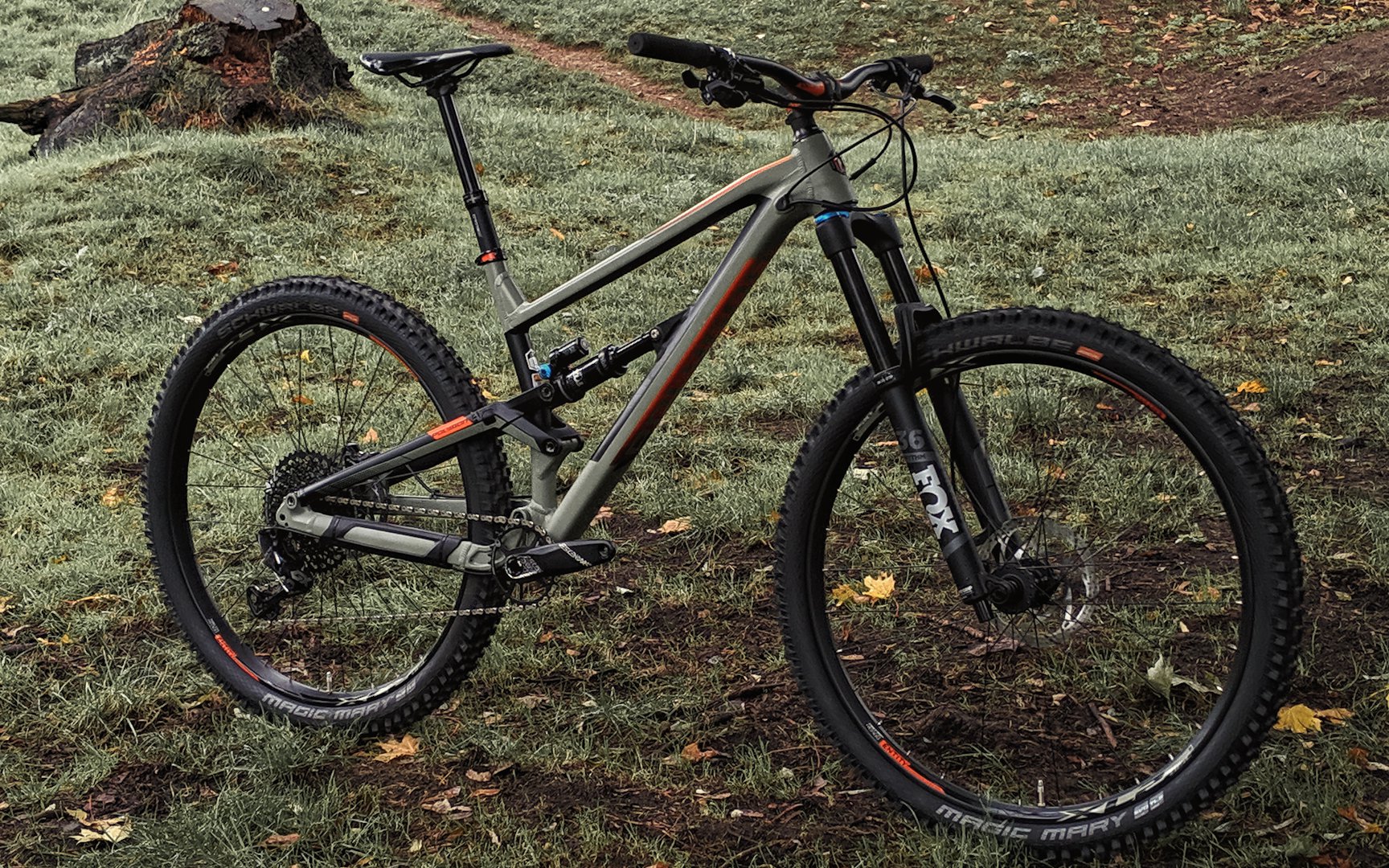
FIRST IMPRESSIONS
Polygon Siskiu N9 29er
Siskiu N
The 150-160mm travel 29'er is quickly becoming the bread-and-butter platform for medium-and-taller riders in every locale with rough, technical terrain. The current trends in suspension kinematics give them similar seated pedaling performance to shorter travel trail rigs and weight differences are more dependent on rubber than anything else. More notably, these longer-travel 29'ers have enough suspension capability to sort out the trouble their aggressive geometry will lead a rider into – an increasingly common complaint associated with long-and-slack 120-140mm travel bikes.
Polygon's answer to this category of bikes is the Siskiu N Series. Right away I appreciated the wheel size considerations with small and medium models delivering 170mm of travel and 27" hoops, and medium, large, and extra-large bikes sporting 160mm of suspension and 29" wheels. The frames look good, both in terms of paint and weld quality, and I'm always interested in testing rigs at the more affordable end of the spectrum.
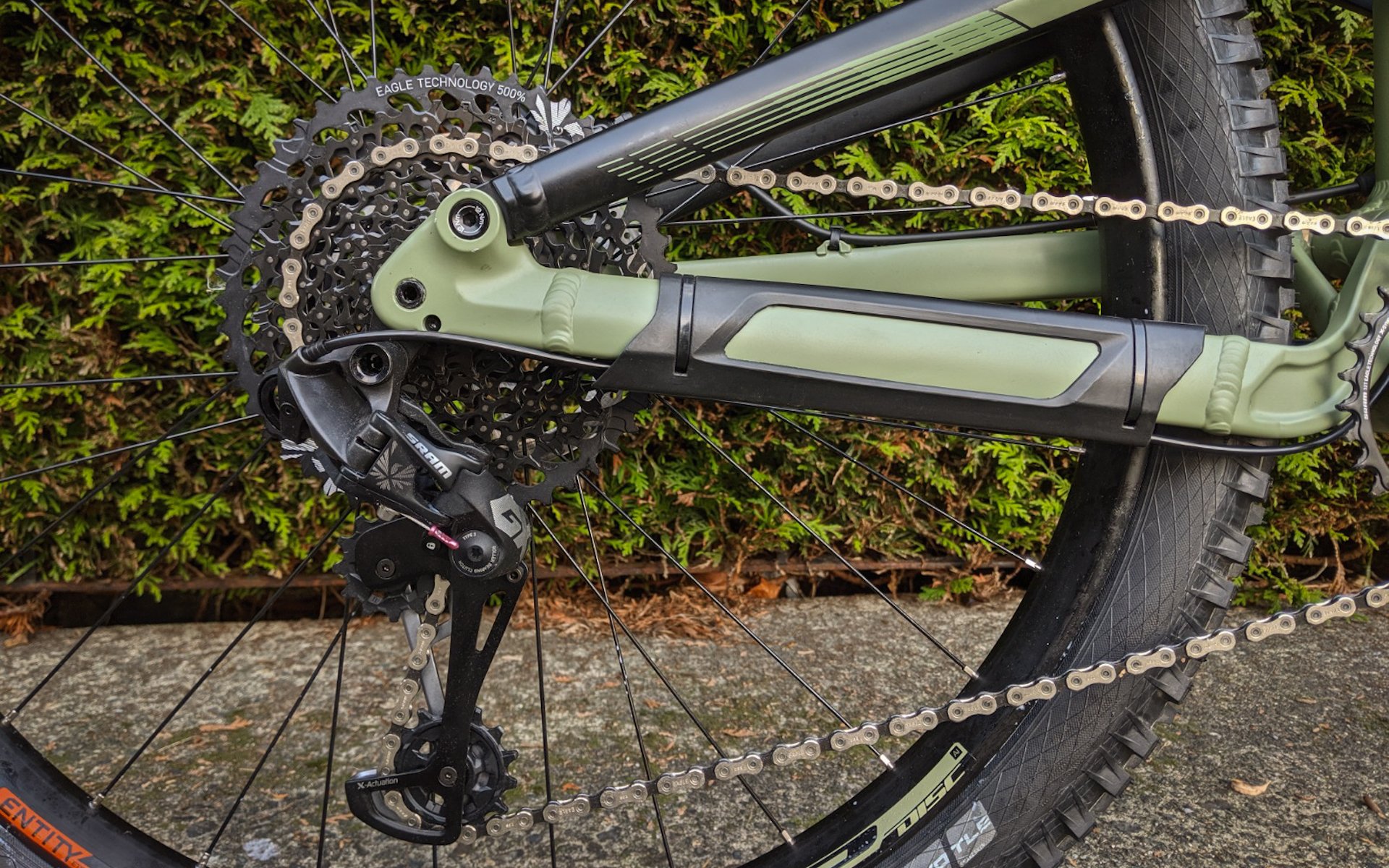
SRAM GX shifter & derailleur join and impressively a GX-level 1275 cassette. The chain is a KMC X12 which is arguably an upgrade over GX.
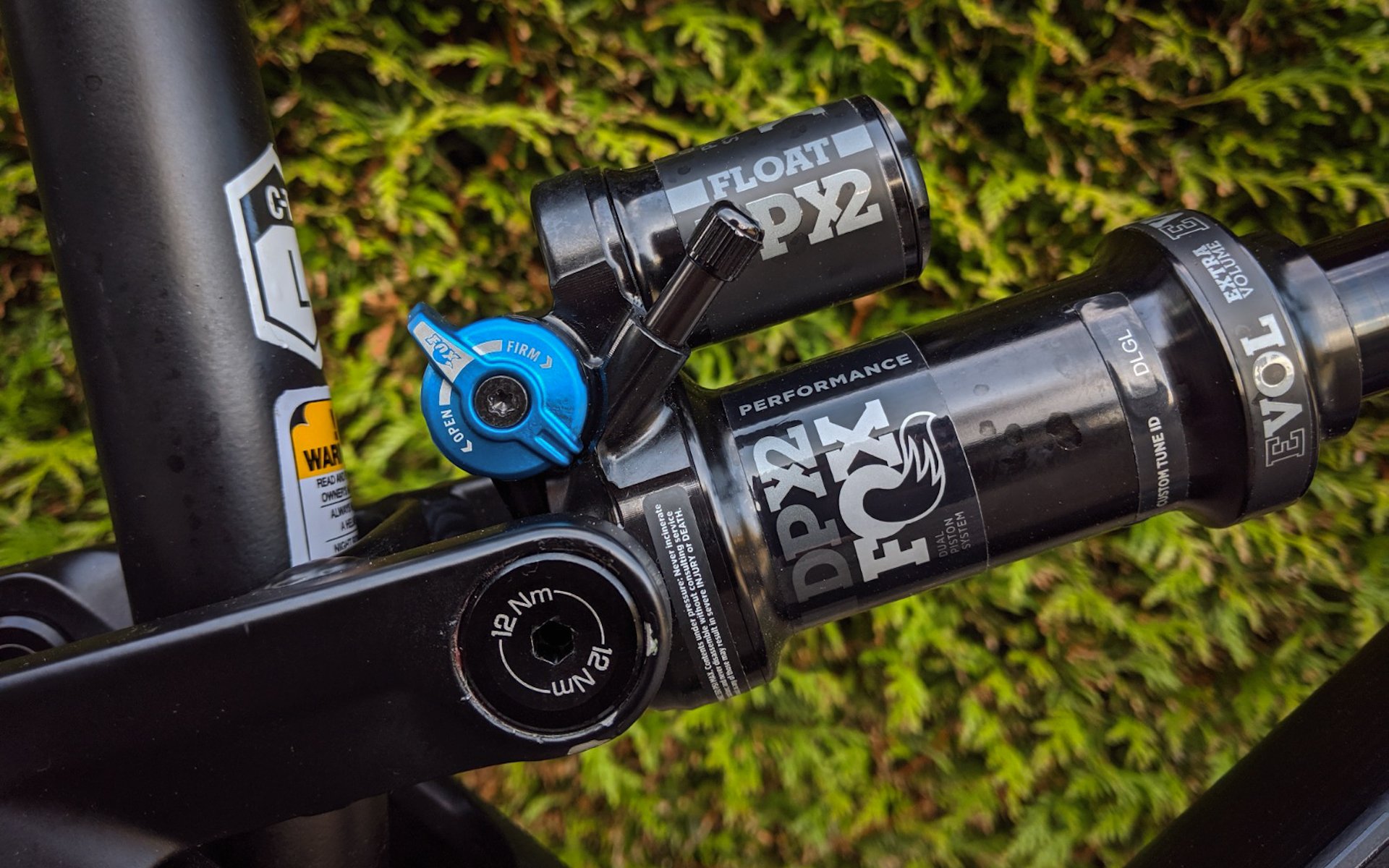
Fox DPX2 Performance with an EVOL air can is another spec highlight at the price. The 205 x 65mm Trunnion mount could become the de facto standard for this travel range.
It's easy to anticipate two complaints about this bike. Only slightly less notable than the lack of an in-triangle mounting location for a water bottle is that the geometry chart indicates every size is a bit short on reach and the effective seat angles are too slack, particularly in large and XL.
But what about price? With this Siskiu N9, Polygon is taking the most common path to demonstrate value, or at least the perception of value, by combining a quality aluminum frame, GX Eagle shifting, and Fox Suspension at the lowest price. In this case, it's 2800 USD for the package.
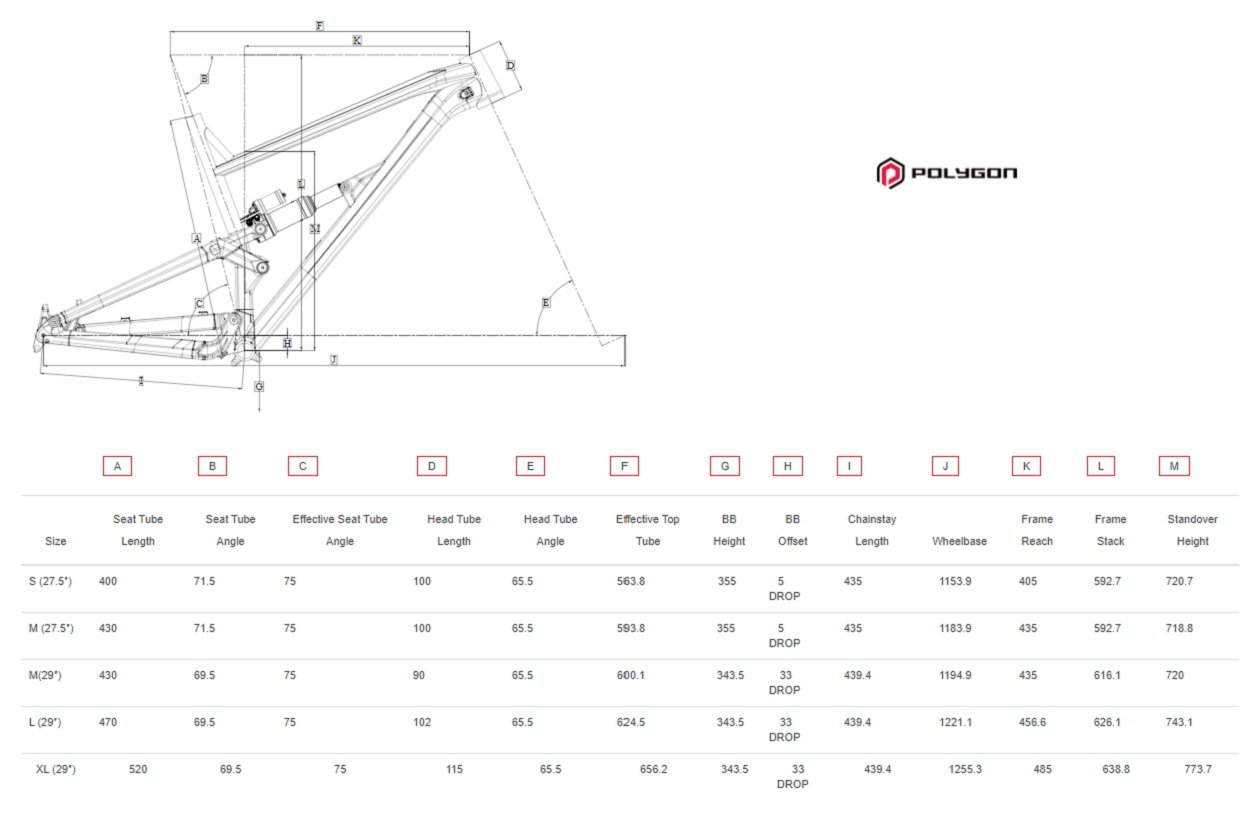
Riders wanting a current, but mainstream, geometry experience will want to size up and push their saddle forward. At 5'9", I'm very comfortable on a Large.
Online
Polygon is available in the USA through bikesonline.com and originally this review process was going to include a build-up experience. Bikes Online has been very successful in Australia and is up and running in the USA but the company isn't selling bikes in Canada just yet. This Siskiu N9 was delivered to me built so I can't comment on how they come out of the box for consumers.
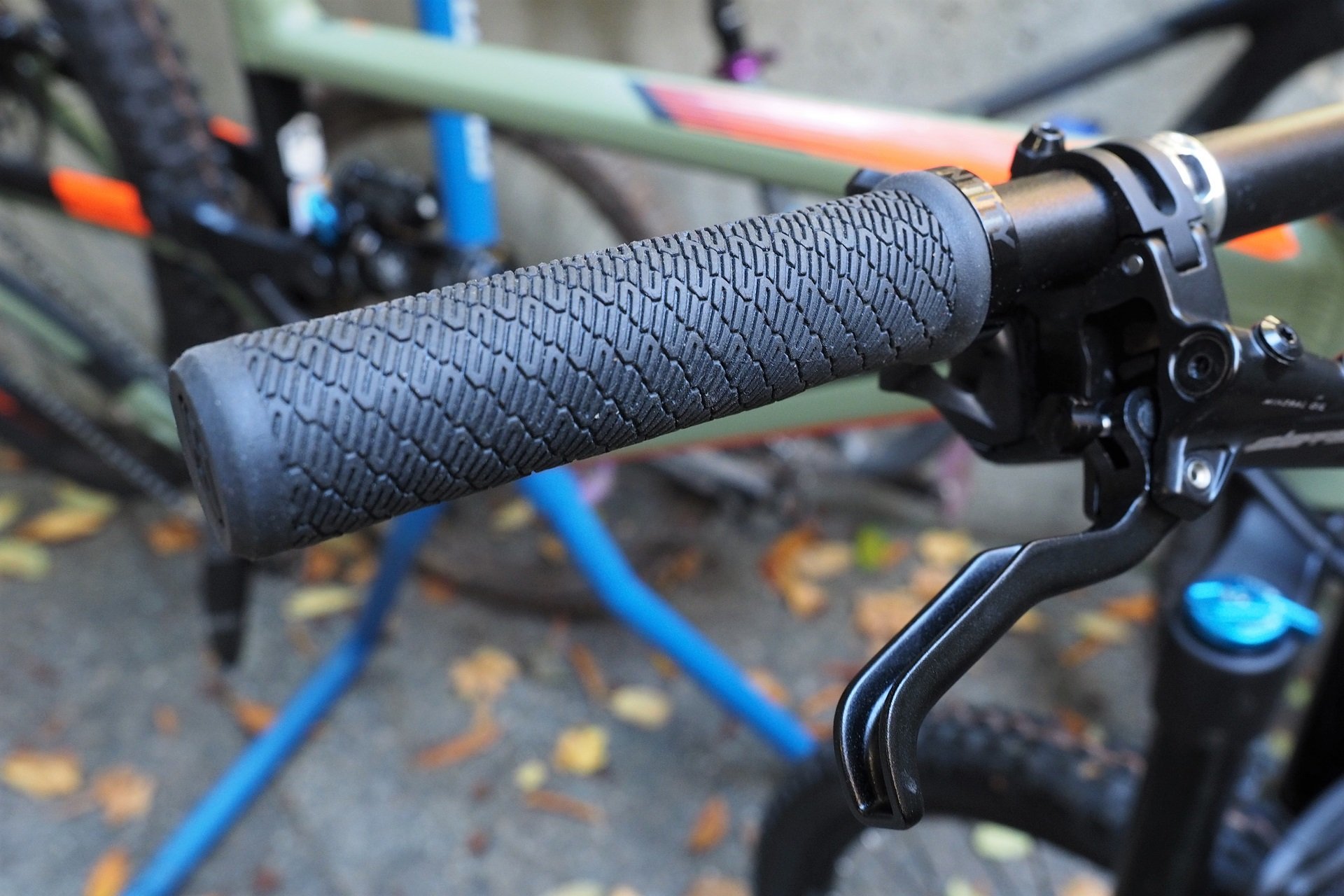
The stock grips are a terrifying combination of a lock-on clamp and rubber push-on grip that rotates under heavy twisting forces. Photo: Andrew Major (AM)
I learned quickly that the stock grips are a terrible liability for a company relying on the average home mechanic to assemble their bikes. They are terrifying. As I discovered on my first test ride, with the lock-on clamp properly tightened the rest of the rubber grip can, and will, twist considerably under a heavy load. Luckily I discovered this torquing hard on the bar climbing out of the saddle but I can imagine more perilous situations. Polygon should either be gluing these grips in place or replacing them with a proper lock-on grip. At the minimum, a purchaser should remove the grips, spray them liberally with hairspray, and then reinstall them.
What You Get
After swapping grips it was time to look at what's impressive about the Polygon Siskiu N9. First off, the frame is very nicely put together. The tube set, forgings, and welds all look good as does the matte green paint with orange accents.
Push on the saddle and it's obvious the Siskiu drives the shock as nicely as any linkage-actuated single pivot and it initializes more easily than many of the suspension designs optimized around water bottle placement. There's a reason that my favourite, classic, best-feeling suspension bikes like the first edition Knolly Delirium-T and 2008 Specialized SX Trail use a similar shock configuration.
As a big fan of industry-standard R&D (Rip-Off & Duplicate), I'd point Polygon towards ridegg.com for some ideas on how to squeeze a bottle into the main triangle on the next edition of the Siskiu without changing the shock configuration.

I don't know if I'll ever come to terms with internal routing - especially internal brake routing - but the Siskiu is pretty clean.
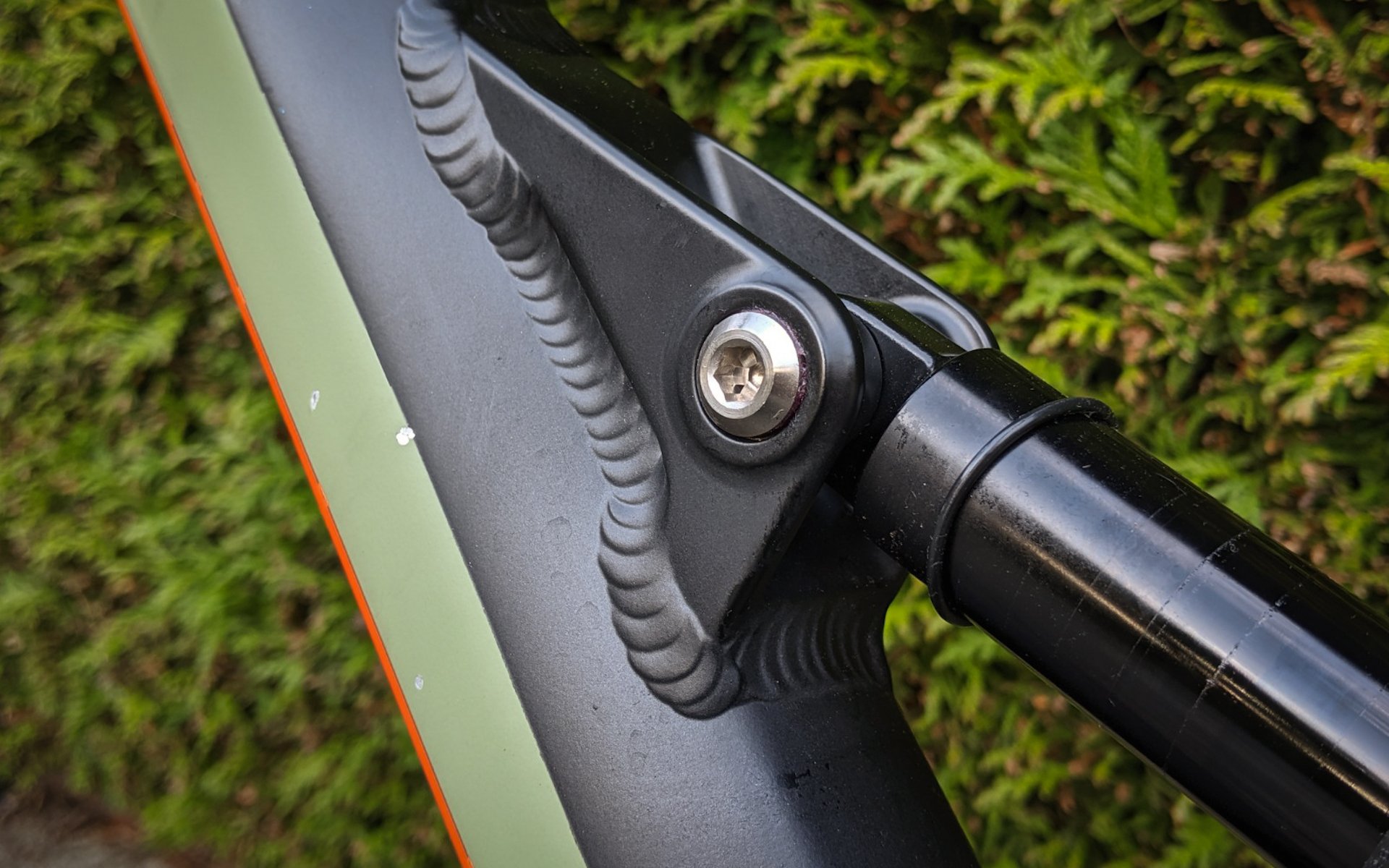
Polygon has frame-only options for carbon bikes but not the Siskiu. Considering the price, some riders will have money left for upgrades.
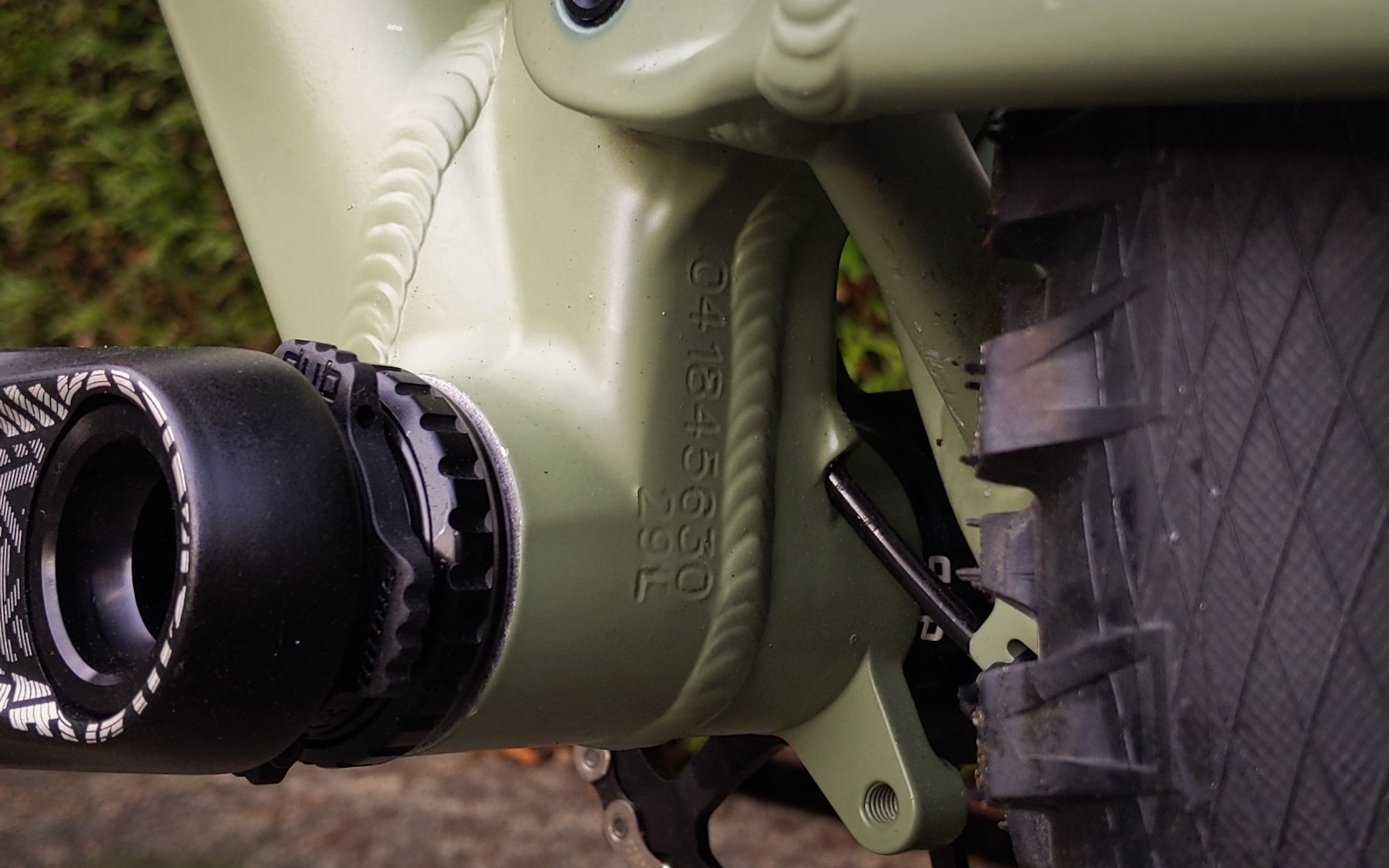
Polygon's welds and forgings look great all the way around. The bottom bracket/main pivot junction is my favourite part of the frame.
Drivetrain
The general consensus is that SRAM GX is the best value Eagle drivetrain, when balancing performance and durability, which I suppose makes sense since it sits smack dab in the middle of the lineup. But GX is maybe more than that? I've heard some very strong arguments, when it comes to mountain bike drivetrains, that GX is now the standard against which all other drivetrains, including those from much larger Shimano, are measured. As a former 'core Shimanophile, it's hard to process living in a world where XT isn't the measuring stick but SRAM's GX drivetrain is both excellent and legion. I'm not expecting anything but great shifting over the test period for this bike and for a longer-term drivetrain review check out this piece by Cam McRae.
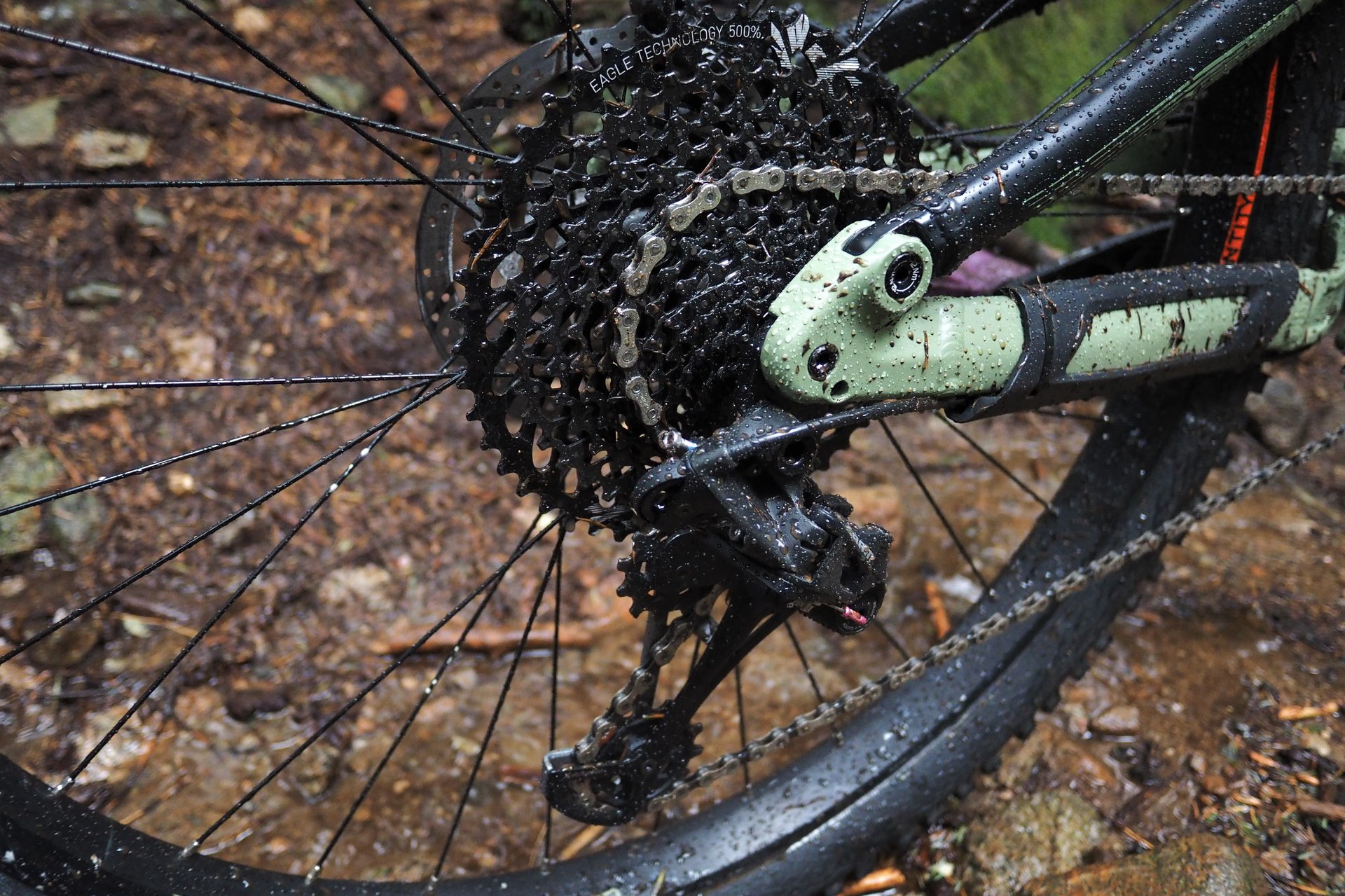
Is GX Eagle the standard against which all other mountain bike drivetrains are now measured? Photo: AM
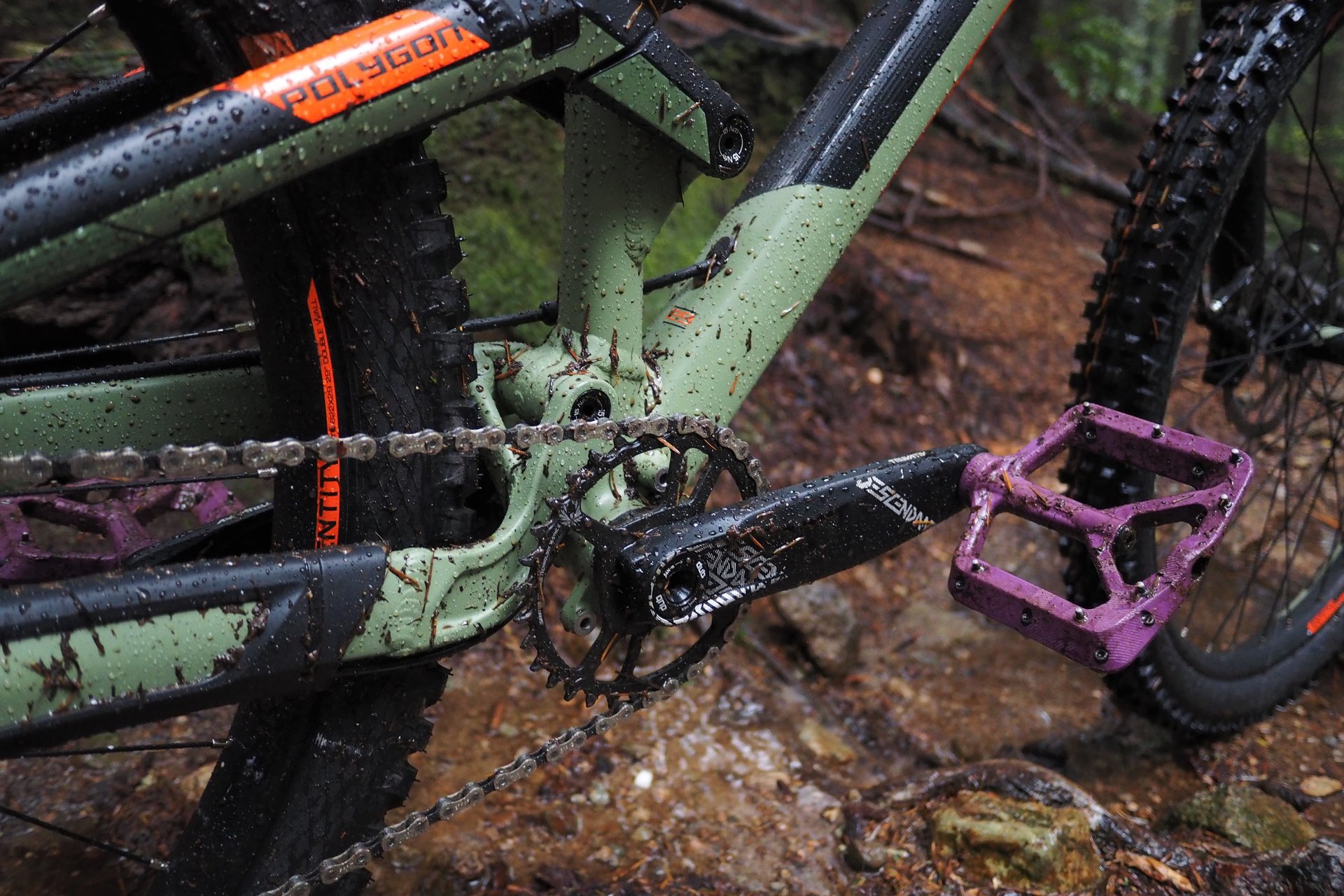
SRAM cranksets are okay and the DUB BBs are a significant improvement by most accounts. Photo: AM
Tires!
The Addix Soft Magic Mary tires are a nice choice at any price of bike and while I'd personally choose the heavier Super Gravity sidewalls I think Schwalbe's 1.5x ply SnakeSkin sidewall is the best choice here. I was excited when I noticed the 27" sizes of the Siskiu N9 come with the 2.6" version of the tire, but alas the 29'er comes spec with the 2.35 which again is the more universal choice. Moral of the story? Really good job on the tire spec.
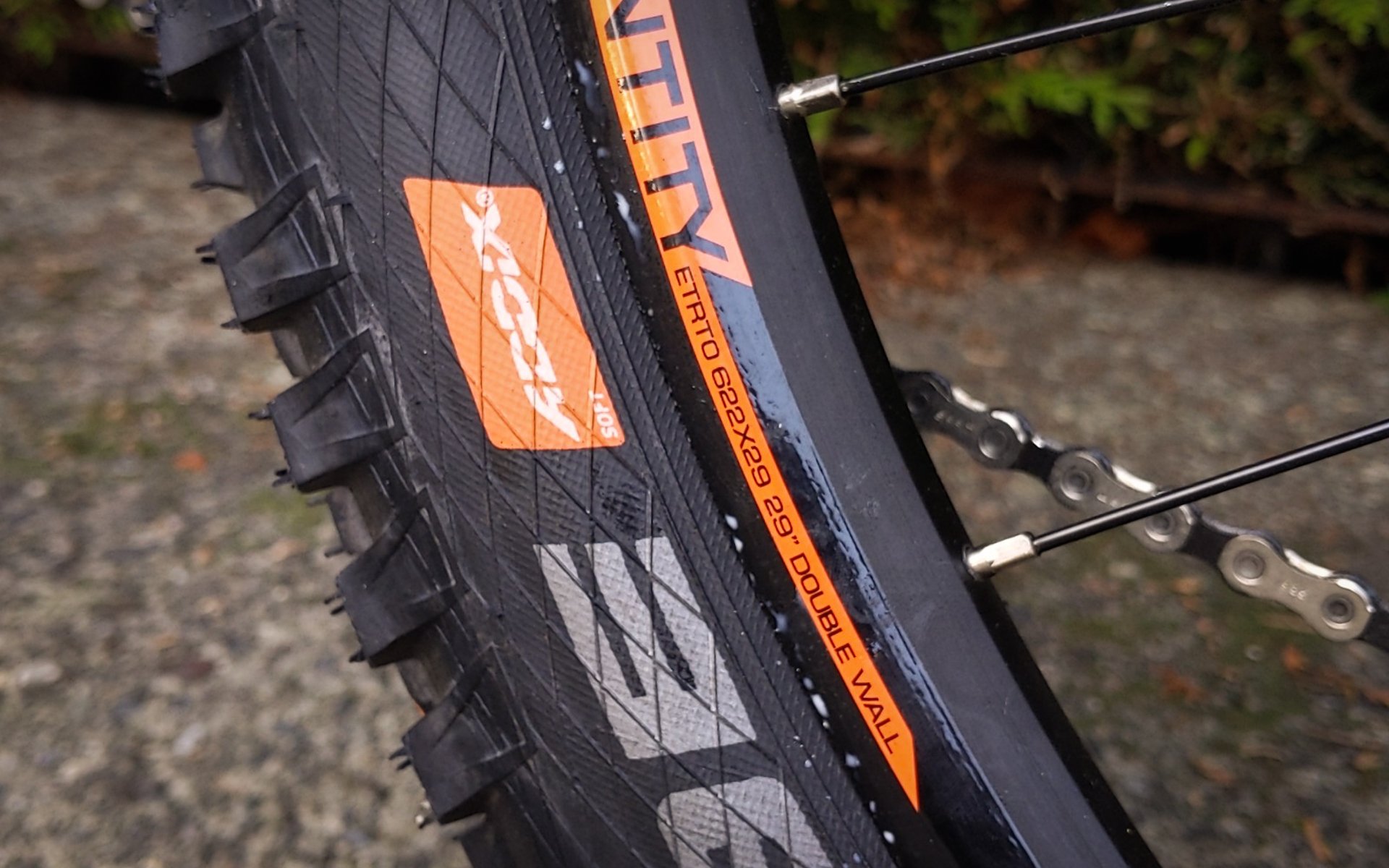
Schwalbe's Magic Mary in their Addix Soft compound and lighter SnakeSkin sidewall option is a great stock choice at any bike price.
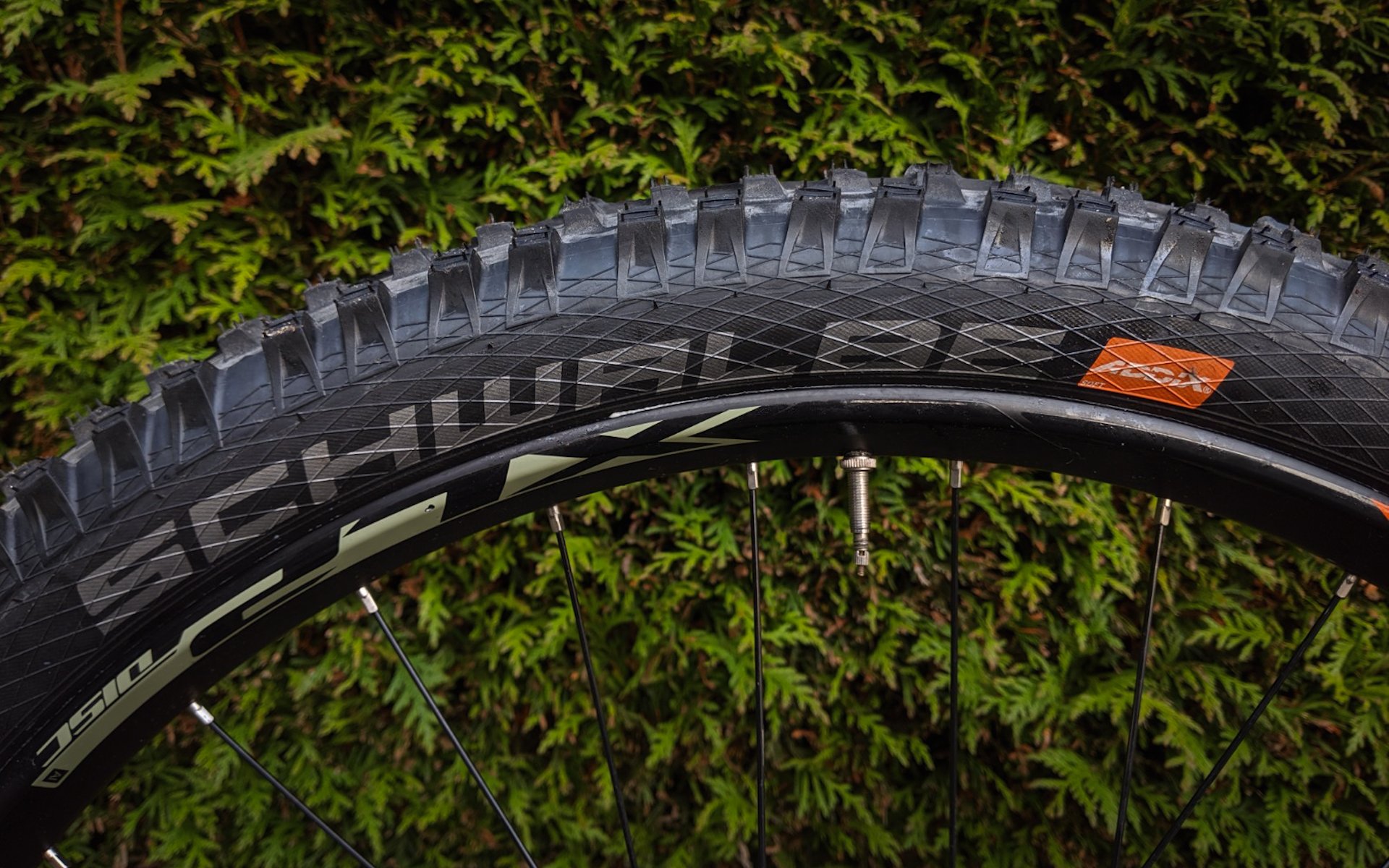
The small and medium Siskiu N9 get 27 x 2.6" rubber where the medium, large, and XL 29er models get 2.35" shoes.
Brakes
The TRP Slate are great feeling brakes that bring a decent bite once the stock pads are upgraded to a set of sintered Shimano pads - specifically the fin-less Saint/Zee pads. The long lever blades feel good and make it easy to modulate the power, which compares to SRAM's Guides (as opposed to the new G2 version).
I've put the brakes in the win column because I think the mineral oil system is a bonus for folks buying this bike online and working on it out of their own homes. Shimano pads and fluids are compatible and readily available, the TRP brakes are rebuildable and easy to bleed, and there's no wandering bite point.
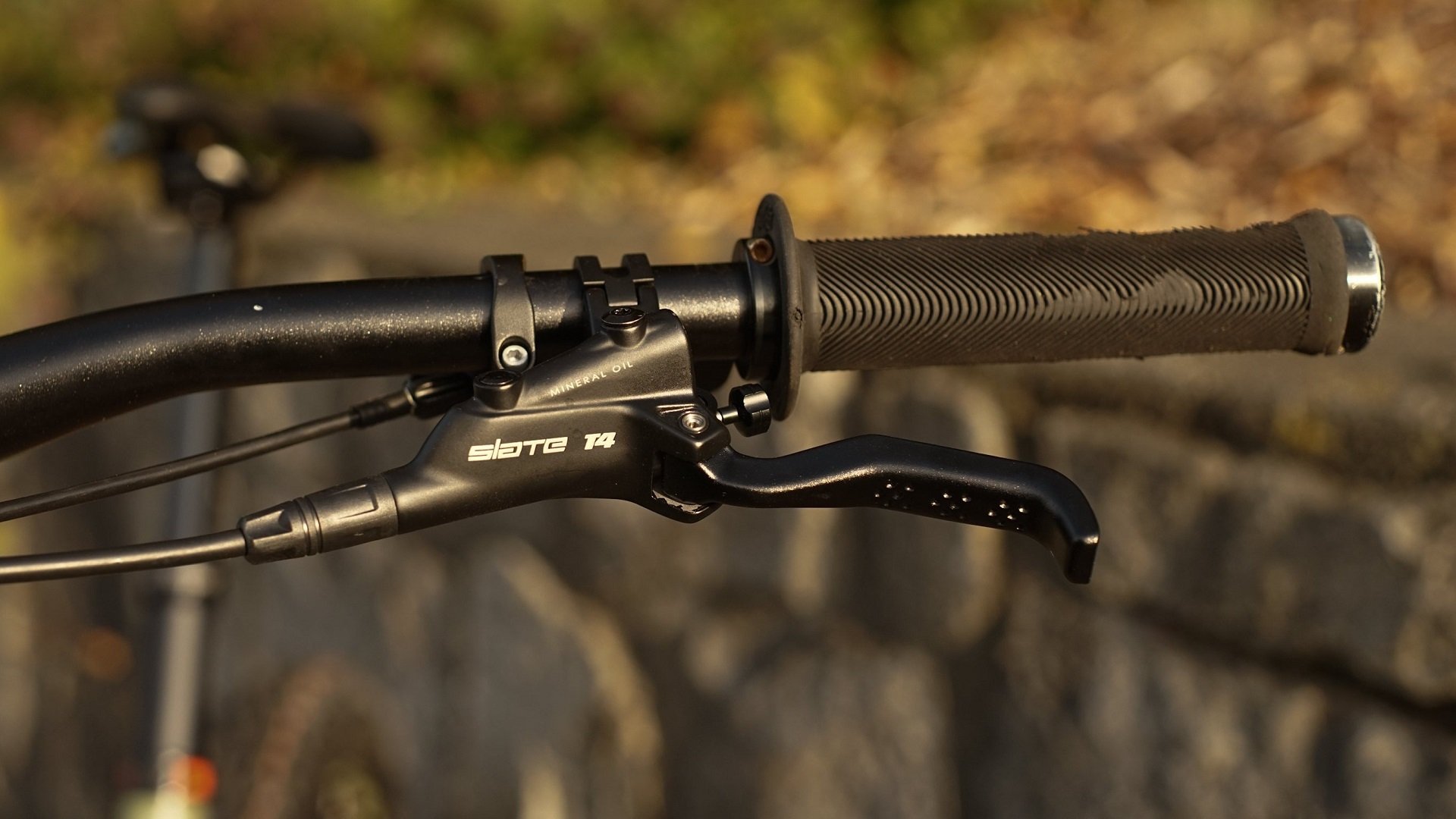
I like the feel and length of the TRP Slate's lever blades.
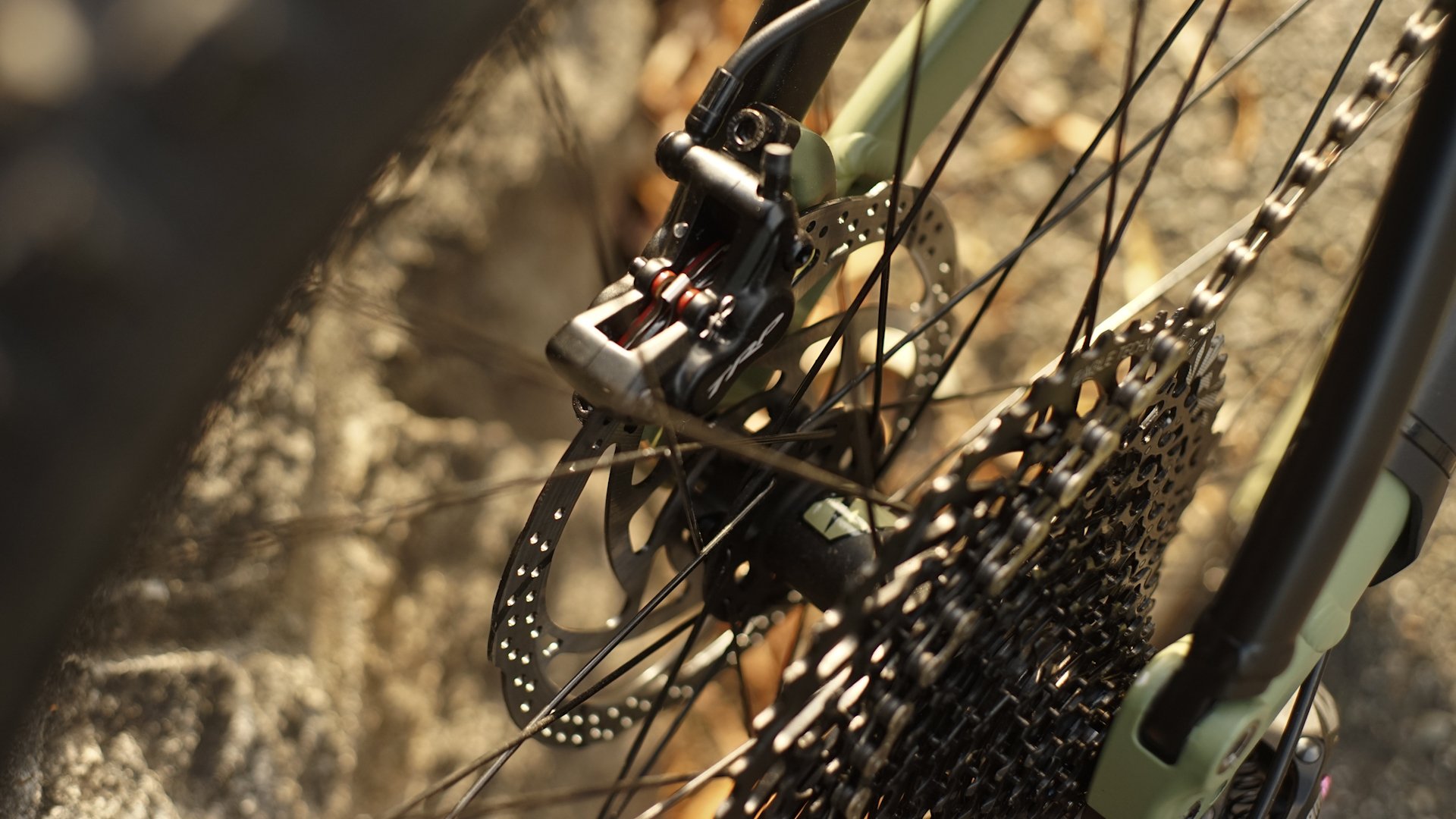
As with the Quadiems I've tested, drag-free setup is quick and easy.
What You Don't Get
I think there's a strong argument that a brake like the Slate has no business on a 6" travel 29er. If you are going to down-spec the stoppers then there has to be an 8" rotor on the front wheel. Period. After the grips, a rotor and set of Shimano sintered pads are the next upgrades I'd make to the Siskiu. Considering I'm a buck eighty-five on the scale, I consider them necessary.
I am comparing the brakes to two really powerful four-piston systems I'm currently riding - the Hayes Dominion and Formula Cura4 - and even in those cases, a big front rotor makes sense for this application. It may pedal like a trail bike, but a 6" 29er can get up to some pretty serious shenanigans when pointed down. With an eye to the budget, I'd like to see Polygon swap these Slates out for a Code R or Magura MT5 system.
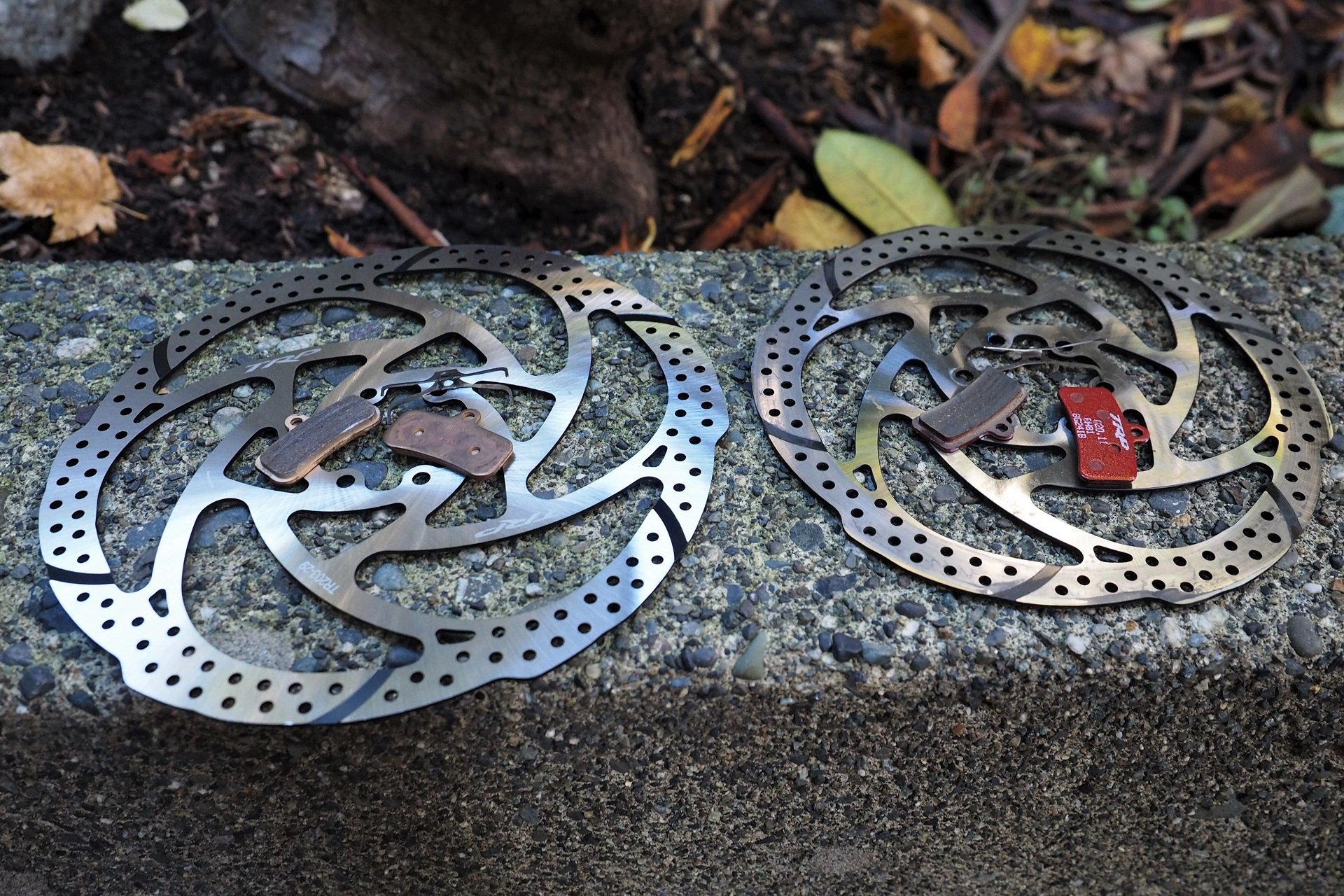
Shimano four-piston sintered brake pads and an 8" rotor are mandatory upgrades. Photo: AM
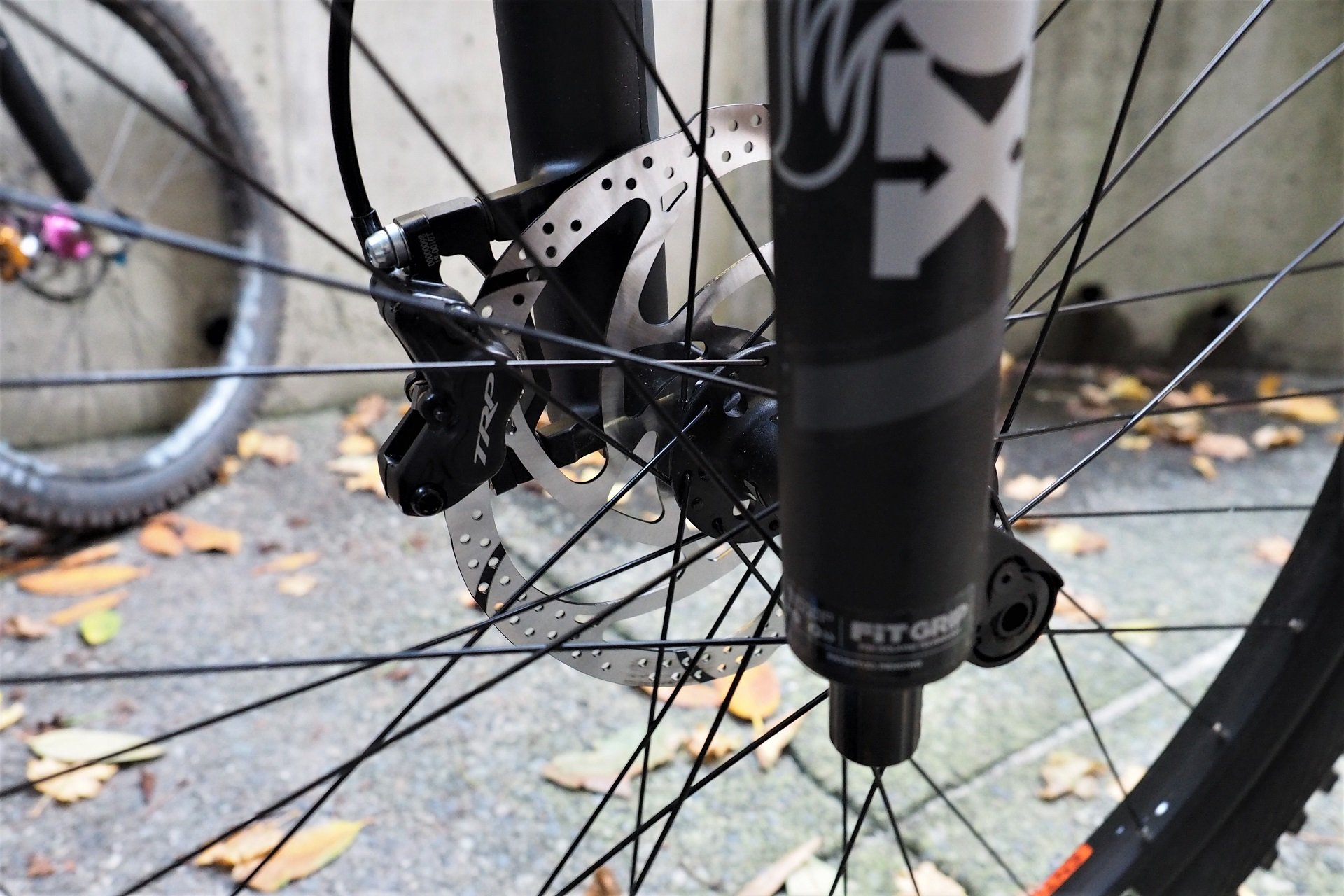
Add the cost of brake adapter to the package as well. Photo: AM
Next up on the mandatory upgrade list is the house brand Entity saddle. This wedge is unfortunately and accurately named the 'Assault.' I sh*t you not. I give bike companies a wide berth on saddle choice because touch points are a matter of preference but I'll bet if one hundred riders tried this seat none of them would choose it.
There are plenty of proven options for basic OE saddles that will work for a large cross-section of riders. In fact, combined with WTB's fit tool a direct sales brand could build some additional customer value, and reduce waste, by letting them choose a saddle from a short-list of perennial choices like the Volt, Koda, Pure, and Silverado.
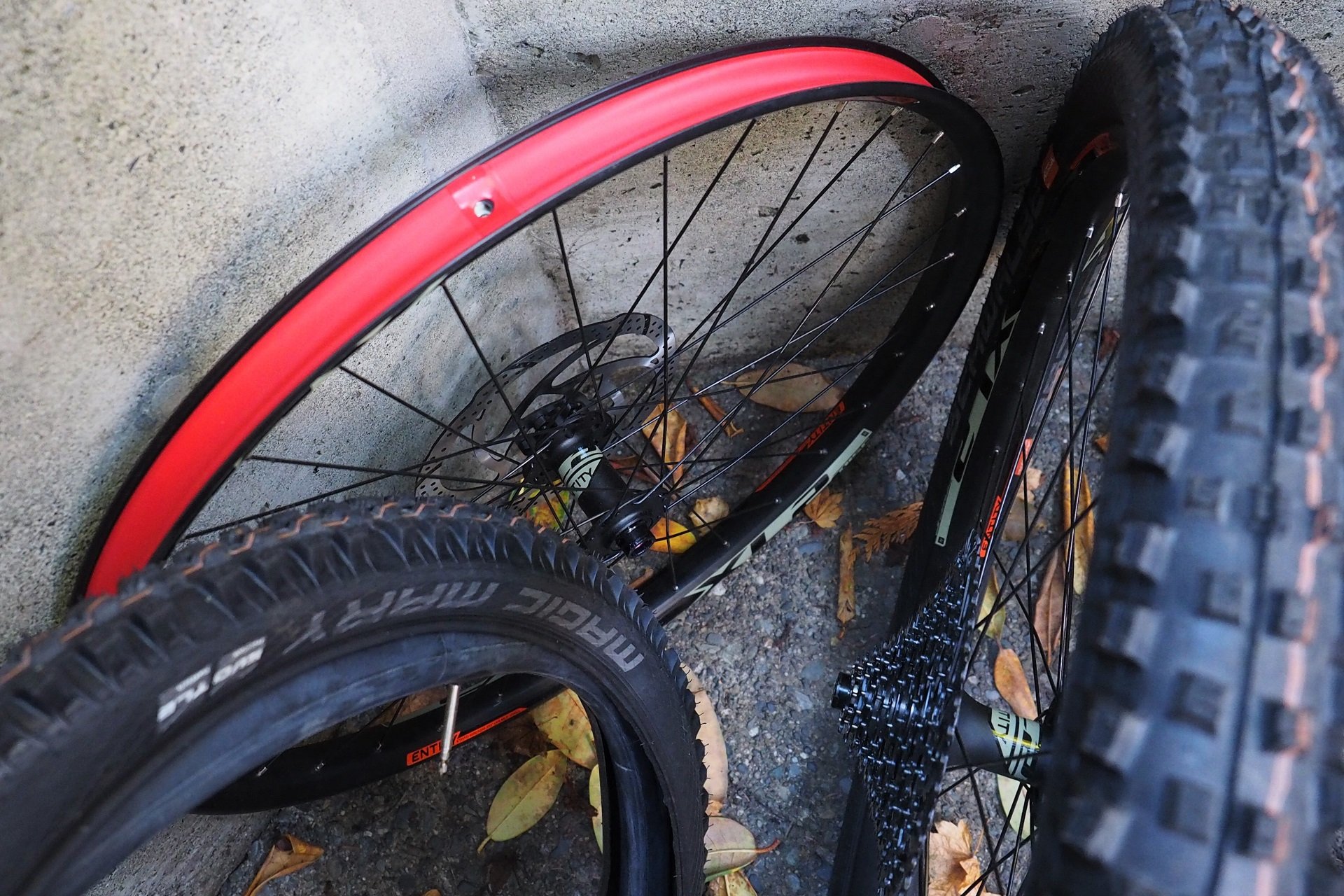
Bike companies, you don't have to ship bikes setup for tubeless... Photo: AM
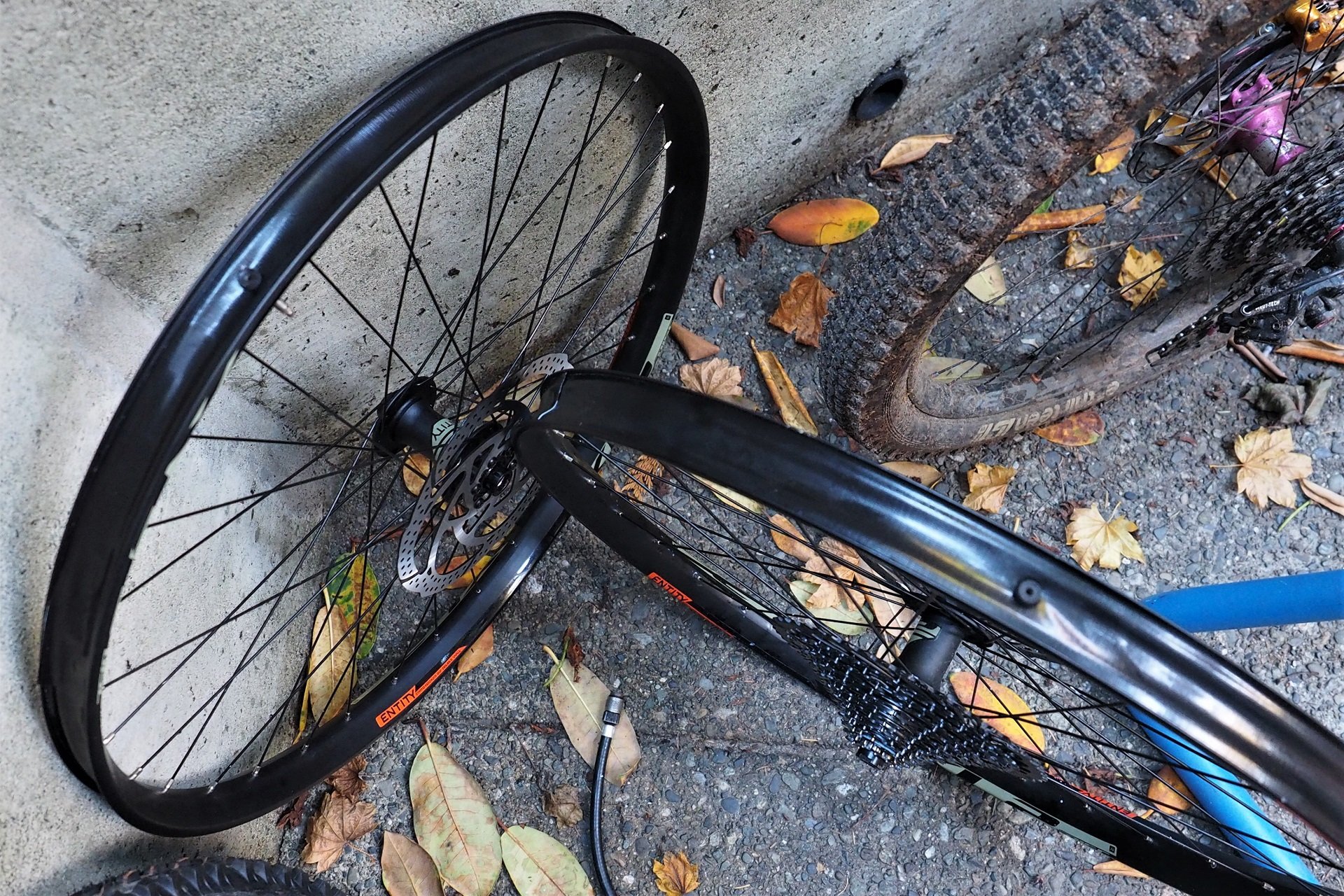
...but for customers' sake, tape the rims and include some tubeless valves. Photo: AM
Even if the Siskiu purchaser is still running tubes they're going to want to pull the tires off and tape the rims in place of the stock strips covering the spoke holes. This is just a matter of time as electrical tape works fine and costs nothing. I'm actually a bit shocked the bike doesn't come pre-taped for tubeless and with a pair of valves included in the packaging. It's clean and simple to ship a bike with tubes, but this is a little detail that costs nothing at the factory and will be appreciated by customers.
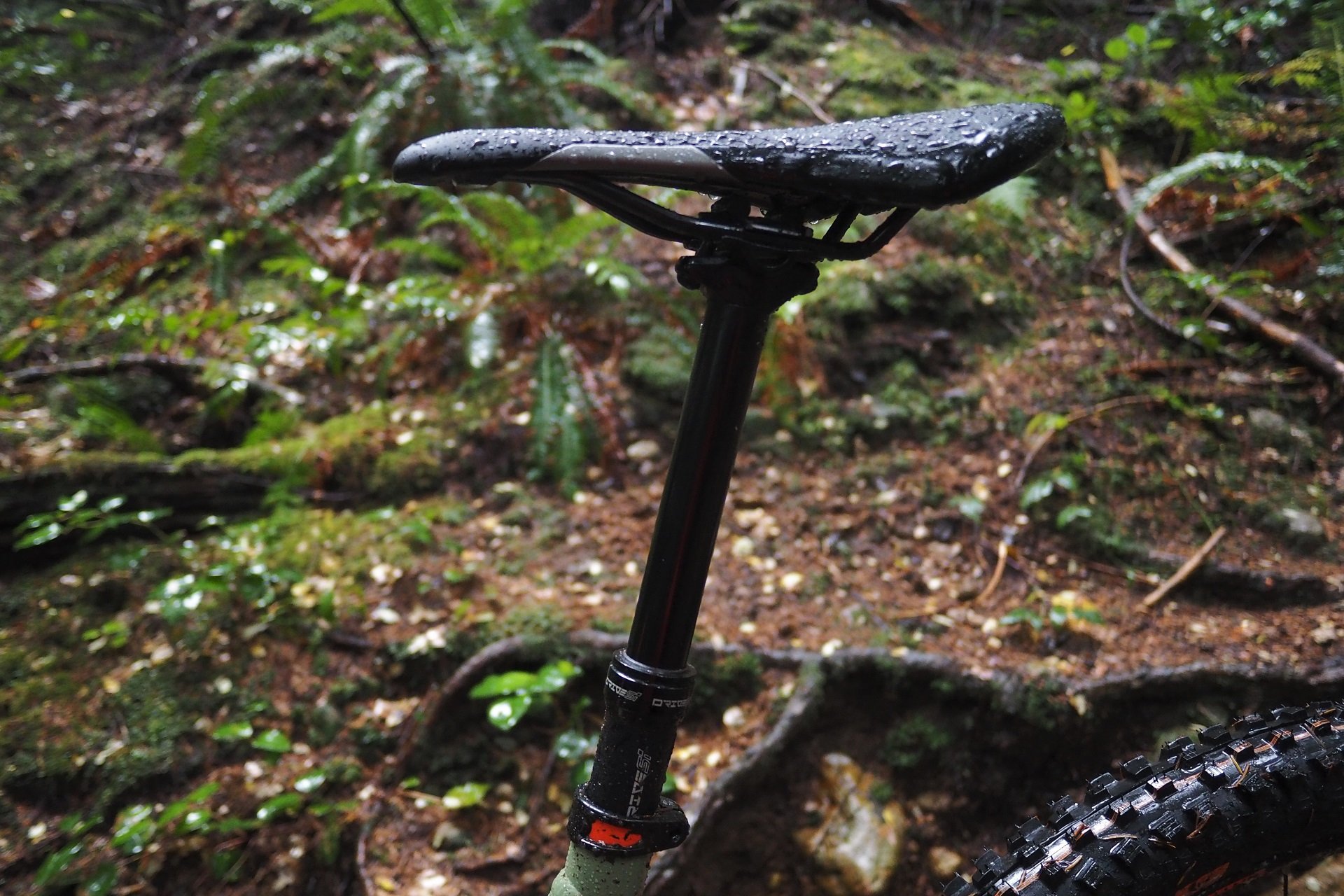
Function is okay on the 150mm house-branded dropper. I'd like to see a 170mm on the larger sizes. Photo: AM
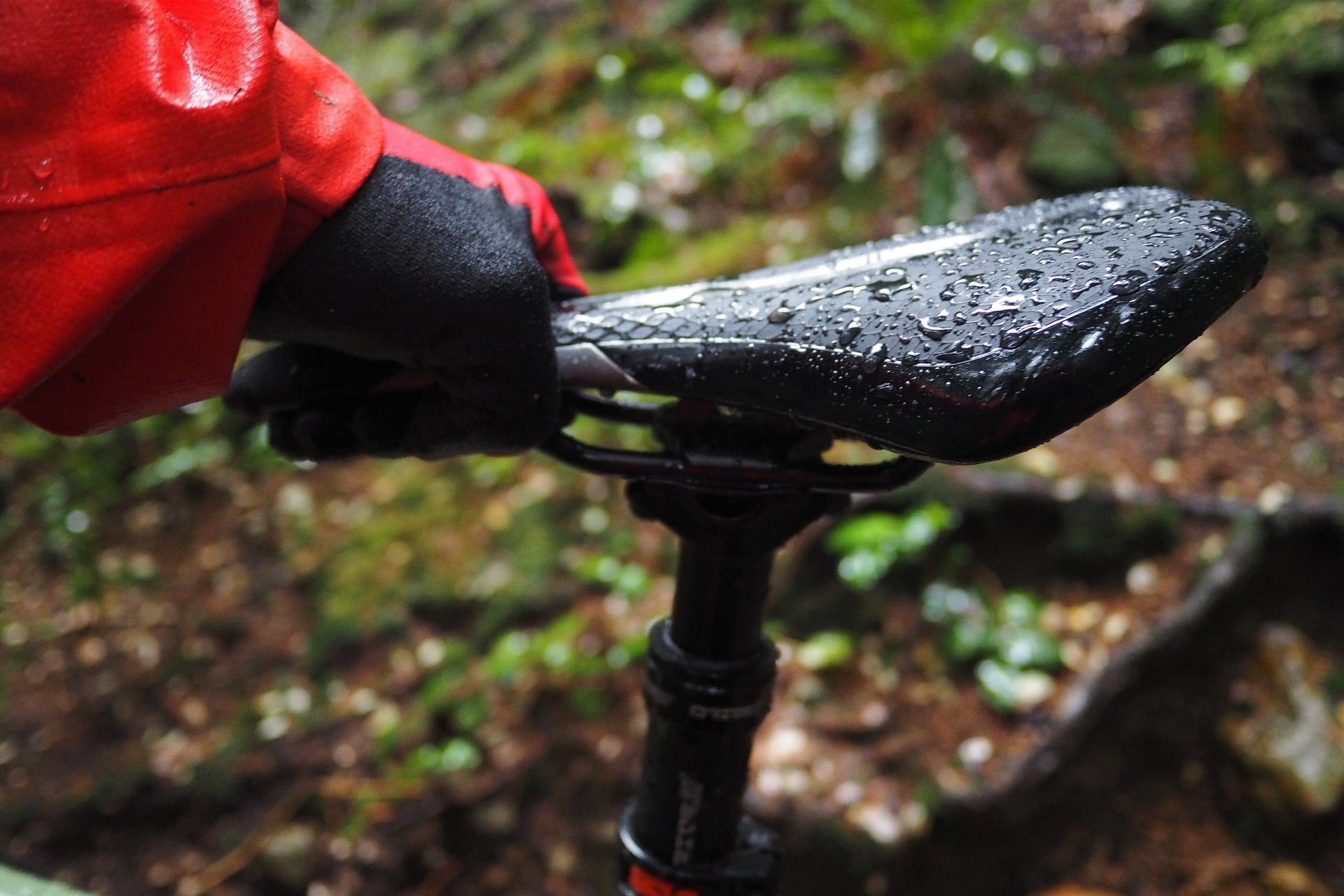
I don't love dropper posts that extend if I inadvertently grab my saddle, but apparently I'm in a small minority of riders bothered by this. Photo: AM
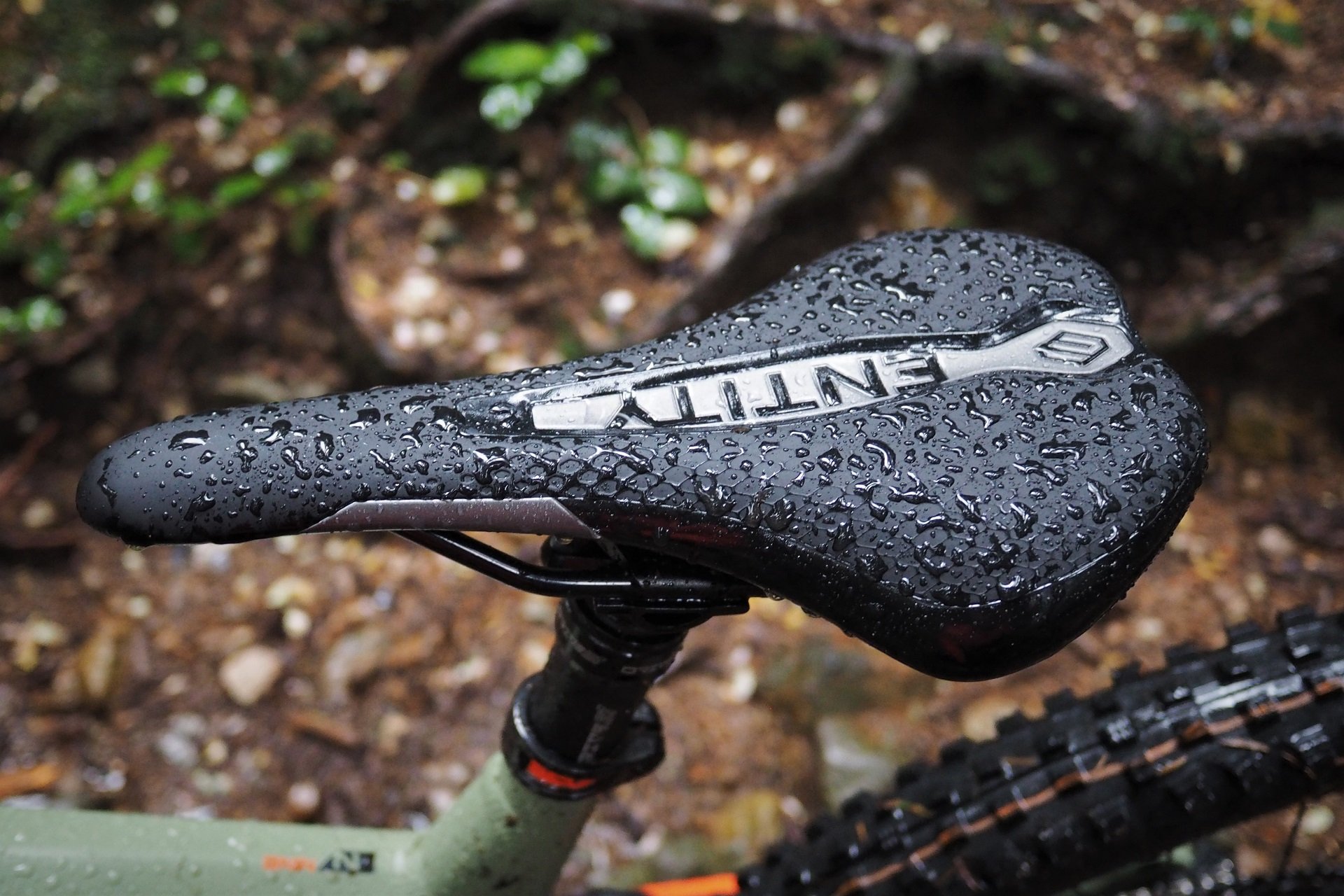
On the other hand, I'm positive the vast majority of riders will join me in thinking the stock saddle is an ass hatchet. Photo: AM
I believe the large Siskiu should come with a 170mm dropper post, and I'm not a fan of the stock model, but I wouldn't spend to upgrade right out of the box. Where I would be dropping more paper is a basic fork service and new seals right out of the box. As with the Santa Cruz Carbon Chameleon I tested, I'm certain that the lackluster initial performance of the basic Fox 36 Rhythm comes down to the lack of SKF main seals - the single biggest upgrade Fox has made to their suspension forks over the years.

The Chase Bike Vest is my preferred way to transport H2O on a bike with not in-triangle bottle bosses.
First Rides
I'm not actually fully committed to the current geometry trend of all the reach with a really steep seat tube angle and I have to say the Siskiu fits like a glove with a 40mm stem. Arguably at 5'9" with T-Rex's ape-index, I should be saying that exact thing about a size medium frame. I do however believe every brand should have a 500mm+ reach bike in their lineup whether they call it an XL or XXL.
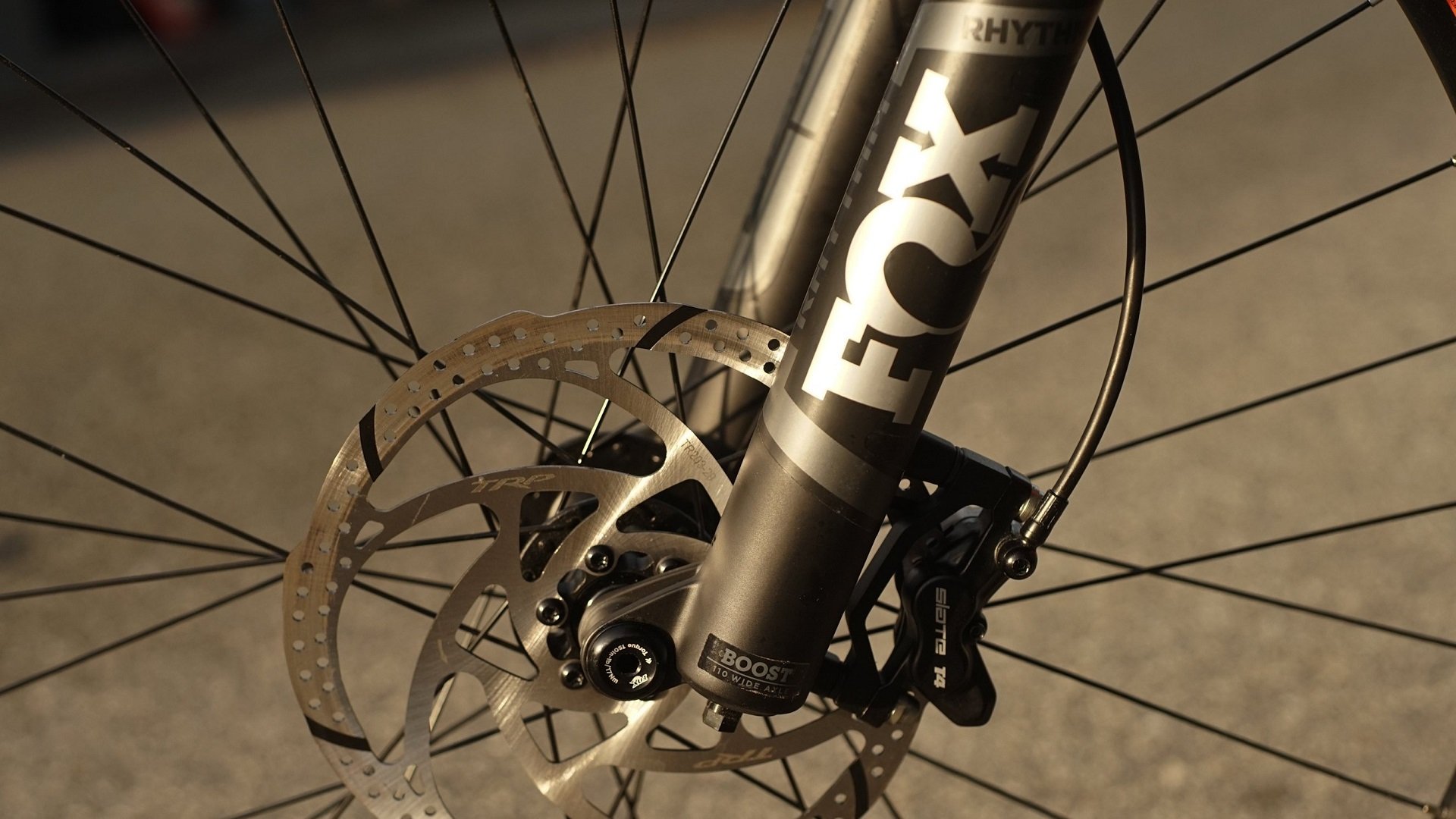
The 51mm offset fork makes perfect sense if I'm sizing down to a medium and running a 60-70mm stem. Is anyone still buying bikes that way?
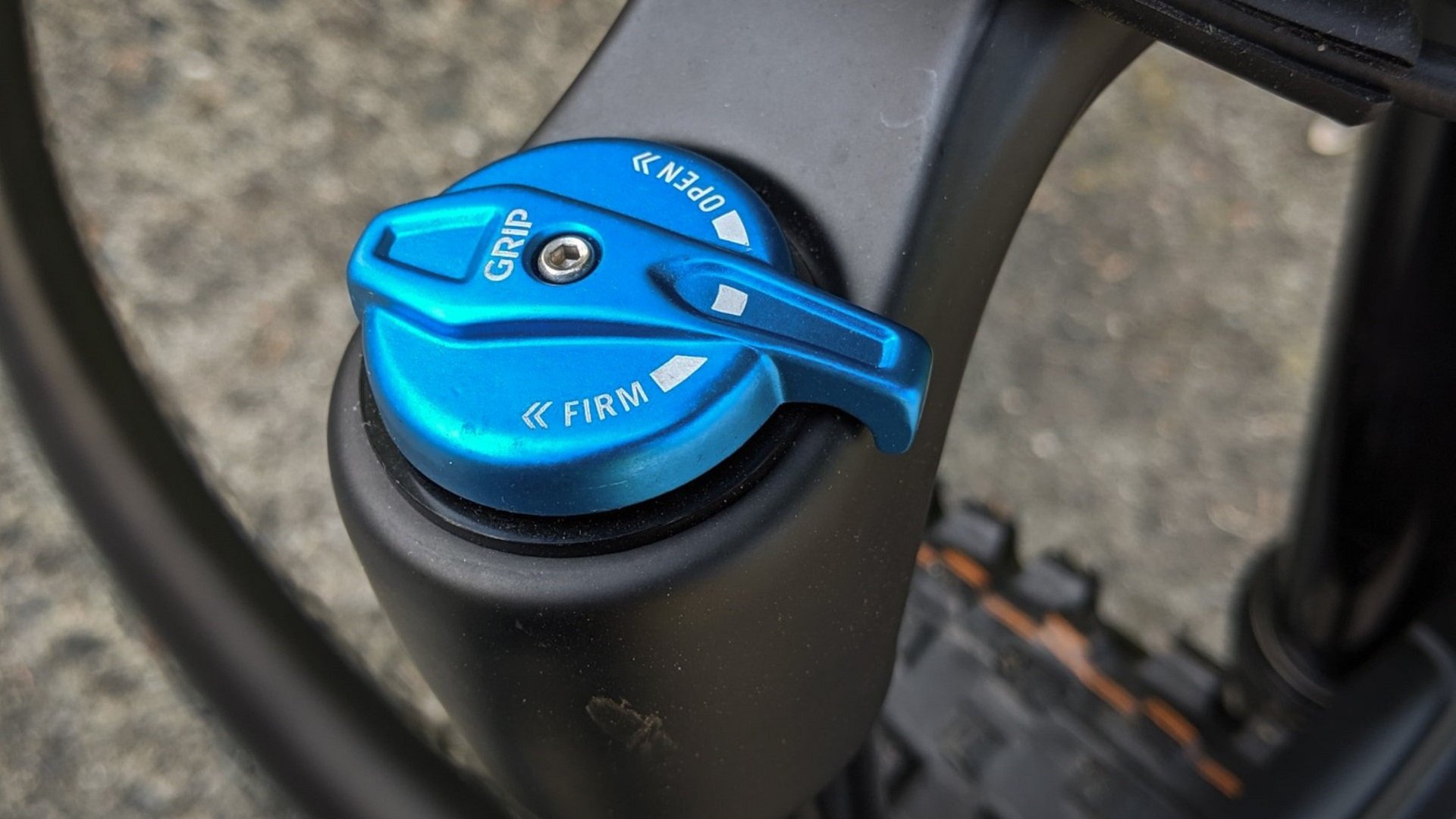
Unfortunately the basic Fox Rhythm GRIP fork doesn't come with SKF seals. At a shop, the basic service and seal kit will be about a 100 CAD upgrade.
My personal suspension bike is a large Marin Alpine Trail 7 and the two companies share the same parent co. and factory and the geometry is very similar. Similar enough in fact that I'd say most of the difference in the basic fit comes down to fork offset.
The Siskiu and Alpine Trail both come stock with a 51mm offset fork but I've been riding the Marin with a 44mm offset which makes a notable difference in slowing down the handling with the sub-50mm stem. It's really not a big deal to adapt back and forth but the more steady and planted feel of the Marin is preferable. I'll swap the fork out on the Siskiu N9 at some point in the test period for a truer apples-apples comparison but with a short stem I think the short offset will be a winner on this platform.
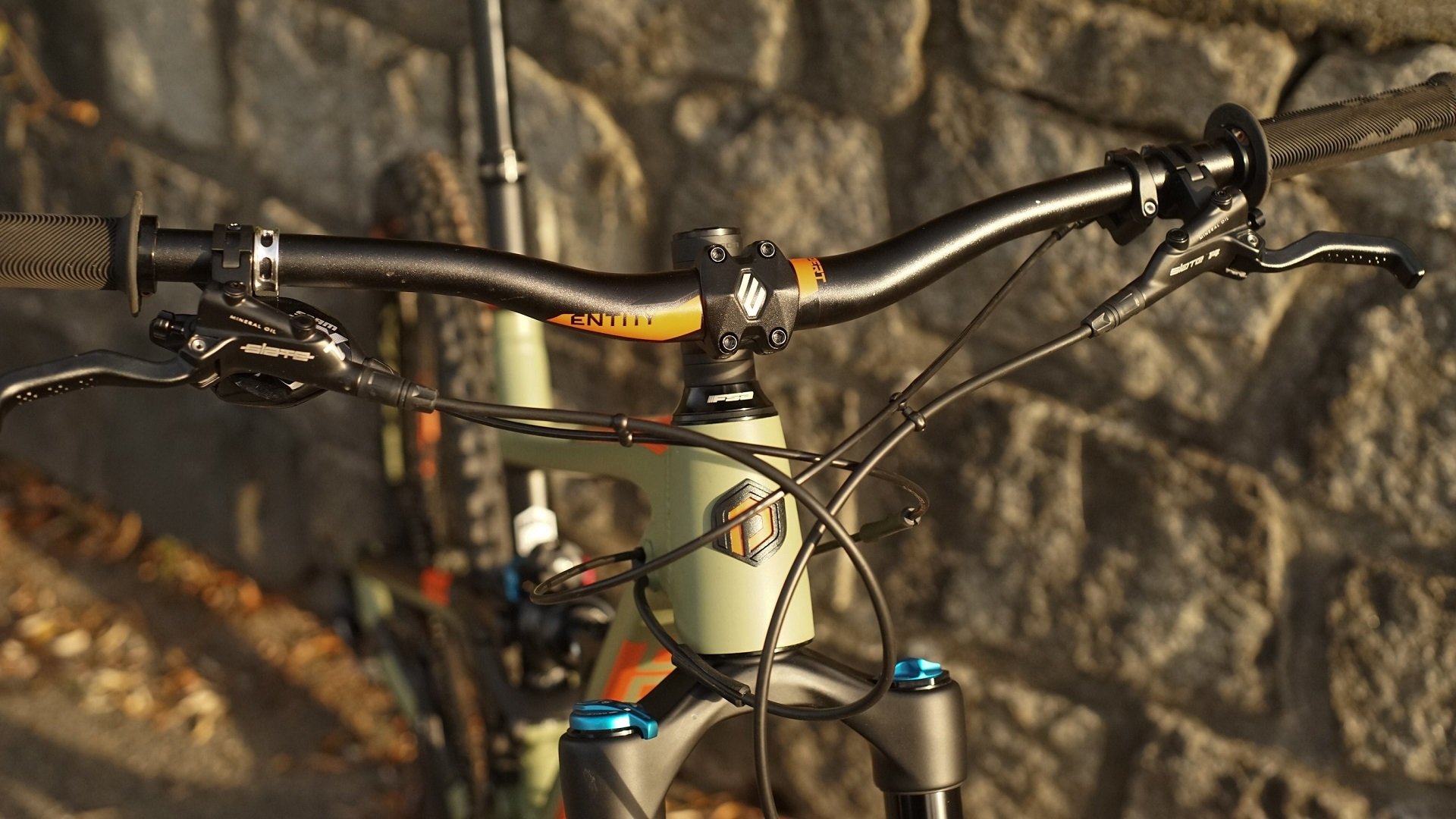
The house brand Entity cockpit and wheels seem totally fine.
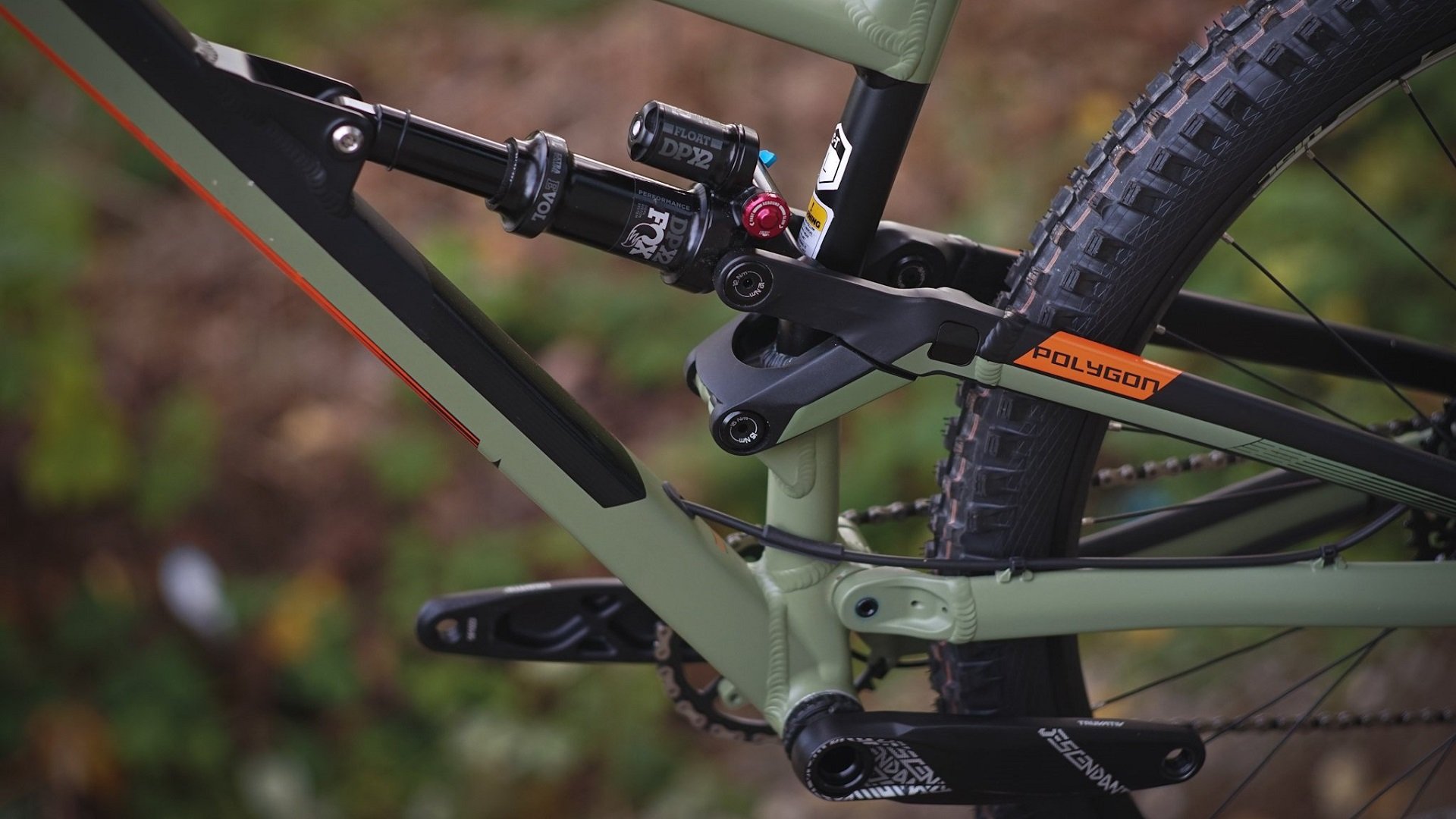
The suspension layout mates very well with the Fox DPX2 shock.
Grips and saddle swapped out, rims taped, tires set up tubeless, bigger rotor and Shimano sintered pads swapped in, and my flat pedals installed and it's time to ride. As much value as the Polygon Siskiu N9 presents, these hidden costs need to be accounted for. That said, it's a really nice aluminum frame, GX drivetrain, and DPX2 shock for 2800 USD and some of those upgrades come down to personal preference, rather than necessity.
A couple of rides in I can tell you the suspension was very easy to set up and the Polygon has good trail manners. I'd call the size large frame a medium-large and some larger frame sizes are needed to accommodate taller riders.Now it's time for the real testing process out on the trails.
For all the specs, here's the link to the 170mm/170mm 27" and 160mm/160mm 29" Polygon Siskiu N9.
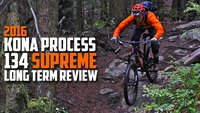
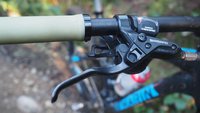
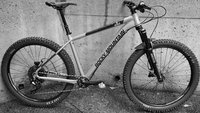







Comments
Kenny
4 years, 5 months ago
> " I'd call the size large frame a medium-large and some larger frame sizes are needed to accommodate taller riders"
They'd need to change the proportions. Most people 6'0" want more than 456mm of reach, but sure as hell don't want a 520mm seat tube. That's crazy talk. At 5'9" I think you got into the small band of people who fit the large.
Overall the sizing is kinda bizarre for most people unless you like 70mm+ stems or 100mm droppers. As much as I like oddball stuff, at 6'0" on a bike with a 475mm reach and a 430mm seat tube complete with 210mm dropper the geometry on this thing just doesn't compute for me.
Reply
Velocipedestrian
4 years, 5 months ago
And geometry is free! They were designing a new frame anyway...
Along with the (sadly) usual cheap but required upgrades. How much do grips that stay put, and sintered pads actually add to the shop floor price?
Reply
Andrew Major
4 years, 5 months ago
Geometry is free! But you’ll never make everyone happy... I wish the rear center was 15mm+ longer. I’ll get into that more in my review but wheelbase really is the new headangle.
Hopefully I did an okay job of presenting where the bike delivers value at its price but yeah - especially for a bike being sold without a shop’s local expertise - you’re going to get a range of customer mechanical and riding ability...
The grips scare me, the saddle pisses me off, the lack of tape on the rims is cheesy, and the brakes are going to get replaced by anyone riding this bike to the potential of a long travel 29’er. For someone looking for the bones to build an awesome bike the $2800 (USA) + upgrades could deliver an awesome machine for the money (especially doing all my own wrenching) but trying to ride it stock has its frustrations.
Reply
UFO
4 years, 5 months ago
I've had great success with a set of Slate T4's on the stock red pads even (but with SRAM centerline rotors), so much so they've ended up on my park bike. I came across a second set in which I could never get the same power out of the front brake... I tried to swap the lever with my known good set, tried finned Shimano metal pads, both with no improvements. So something going on at the caliper.
Reply
Andrew Major
4 years, 5 months ago
Interesting. Curious, if you don't mind saying, how much do you weight and what are you comparing them too? Not the first person to mention this, and I've heard similar feedback about the Quadiem, so I do have to wonder if there's a QA/QC thing going on.
Did you notice a big difference swapping from the TRP rotor to a Centerline? I've used both Magura and TRP rotors and noticed no difference.
I had to up-rotor the Quadiems I tested too (and install Saint pads) to get the performance I was looking for and even then (now) they feel a bit under-gunned compared to the Cura4, Code, MT5/7, or Dominion which I think are all solid buys.
I'd definitely have zero complaints if this bike came with the MT5 (or Trail Sport) or the Code R in terms of balancing a budget and braking power.
Reply
Andrew Major
4 years, 5 months ago
Dropper post preference is a killer. I know folks who are hoping longer than 200mm posts are coming and folks that have gone back to 150mm.
Personally, I’ve backed off to 170mm. Same way I’ve ended up on a 780mm bar. I’m happy a bit wider or a bit narrower but that’s my happy spot. I could fit a 170mm post on the Siskiu with a bit of room leftover (and think they should spec one on the larger sizes, as I said). I don’t disagree though that designing the platform around 170mm with the knowledge that some riders will go longer and some shorter that the seat tubes could be a bit shorter in each size.
—
I don’t think you can look at Reach isolated from effective top tube length. What’s the STA on your current bike? Mega-steep STA makes even very long Reach bikes feel small seated.
My seated pedaling position is right about perfect on the Siskiu and I’d only need a longer Reach if the STA was steeper.
I do think with bike fit by stem length basically reduced to 15mm (35-50mm stems) that more sizes are needed in every companies’ range. Hence the M/L comment.
Reply
Kenny
4 years, 5 months ago
I know what you mean on the ETT thing but honestly I don't get super hung up on ETT to be honest, because seats seem to generally have enough rail adjustment to get me where I want. It's one of the only dimensions you can easily alter with no real effect on any other parameters.
I have two fairly new school bikes and an older one.
I have a large 2020 ripmo AF -475 reach, 76 deg STA, 632 ETT. I keep the seat slammed forward, I wouldnt complain if it was a degree steeper.
I also have a large 2019 rootdown. 478 reach, 76 deg STA, 637 ETT. So unsagged numbers are very similar.
But despite being slightly longer, I think because it only sags up front, the STA feels super steep and I actually run the seat well rearward or center. It has a 35mm stem, ripmo has 40, but I run the seat literally at the other end of the rails, so it definitely has more ETT overall but both bikes feel right to me.
Then I have an XL 2017 Bronson same 475 reach but 74 deg seat tube. I keep the saddle slammed forward of course but it's not terrible.
What this tell me is I'm probably more susceptible to how STA affects rear suspension operation/sag that anything else.
I think that with a long dropper you have to relearn a bit. It's habit to pull the lever and sit down until the post bottoms. It takes some time for your body to learn to just take the amount of travel needed for whatever's ahead. I probably don't dump the dropper to the bottom in 80% of cases but on a real jumpy trail or steep roll it's nice to have the option. And thinking about the 210 is definitely just a luxury, I'd be totally fine one a 170-180mm post.
I have short legs though, so I can see for example the 419mm seat tube on my ripmo AF being a little too extreme the other way. 470 is a great length for a large frame imo.
IMO bikes could be sized 450/475/500 for m/L/xl with the same dimension for reach and seat tube. And nearly cover everyone.
Reply
Kos
4 years, 5 months ago
Nice early review.
"I'm not actually fully committed to the current geometry trend of all the reach with a really steep seat tube angle "
My brother!
Reply
Andrew Major
4 years, 5 months ago
Thanks; Effective top tube length matters too!
I don’t know if I have strangely long femers or if it’s all the single speeding but I need to be climbing a wall to generate real power, and achieve a comfortable position, with a really steep STA.
Reply
Kos
4 years, 5 months ago
Same. And I do a fair bit of "not mtb" riding, which probably matters in terms of what I've adjusted over the years (decades).
Don't call me a roadie!
Reply
Andrew Major
4 years, 5 months ago
Ha!
I think doing a deeper dive on current geo trends it’s once again an example of bike designers taking the easy road of what’s popular - like with fork offsets - rather than choosing spec/geo that’s best for a given size or application.
Just talking FS bikes and not accounting for personal preference...
Effective seat angle for a XXL bike with 525mm Reach probably should be 81-degrees.
Effective seat angle for the XS of the same bike probably should be closer to 74.
Look at that... there’s room for 6x sizes in between. The M and M/L are where the bike jumps from 27” to 29” wheels.
Oh, and the rear center of the XS can be 430mm and let’s add 5mm per size.
Beautiful.
Reply
Please log in to leave a comment.